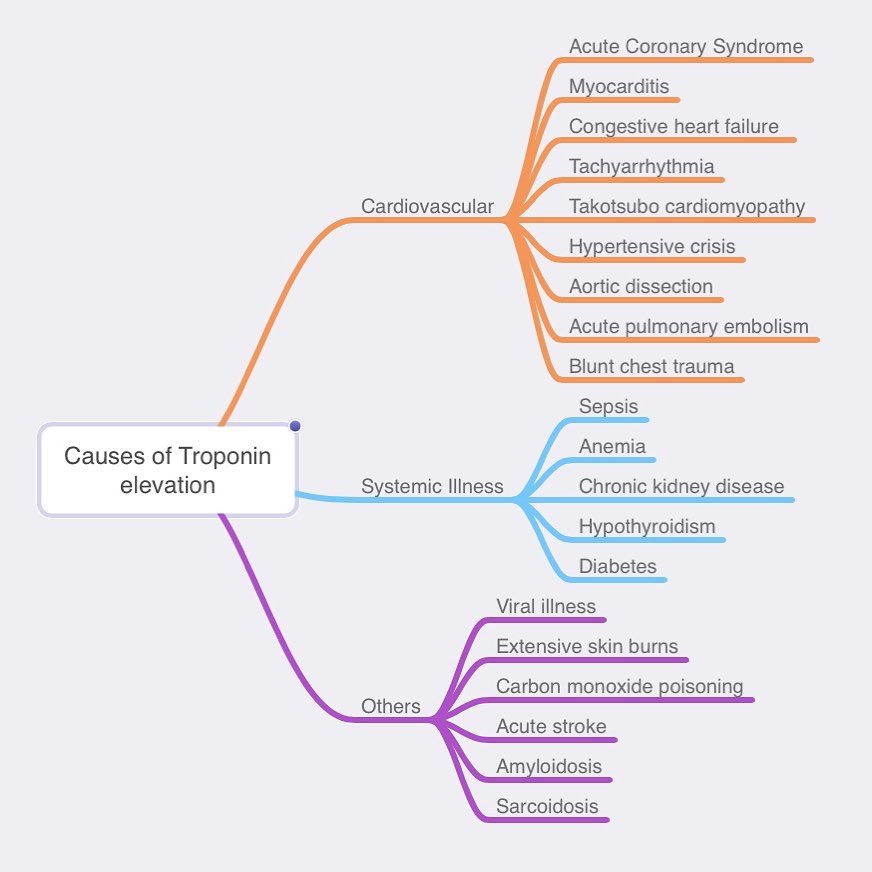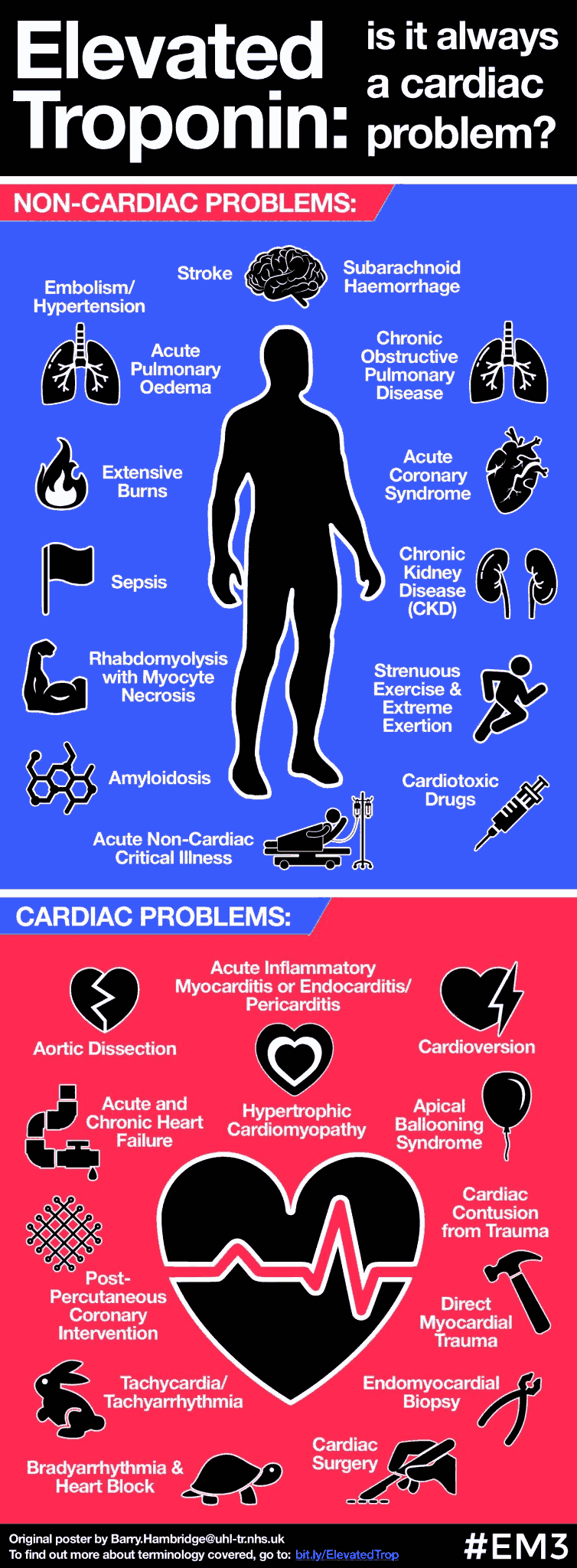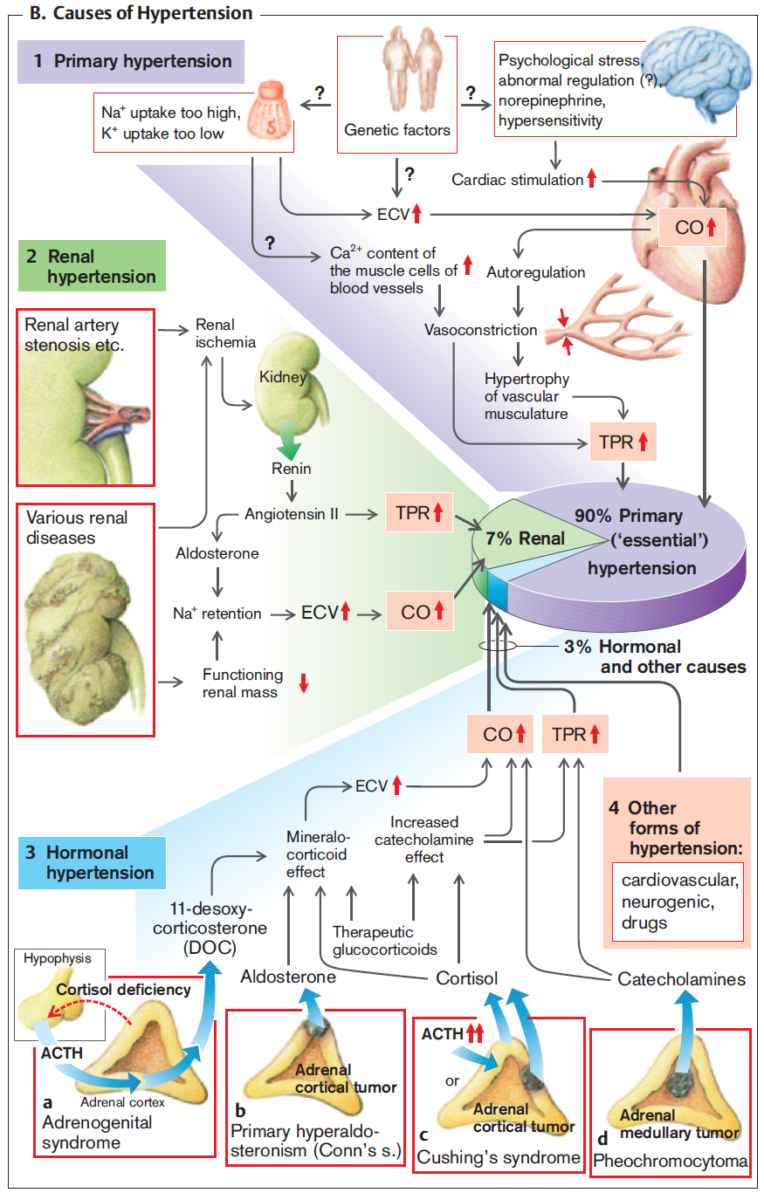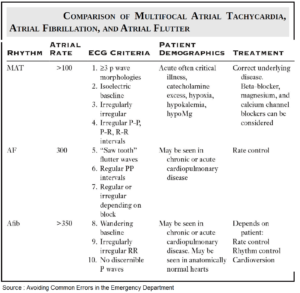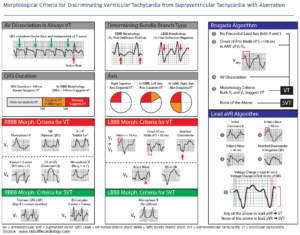Acute chest pain accounts for ~5 million emergency department (ED) visits annually in the United States (US). Cardiac enzymes are routinely used to risk stratify ED patients with acute chest pain when there is concern for an acute myocardial infarction (AMI) or acute coronary syndrome (ACS).
Troponins T and I are the current standard cardiac enzymes for the diagnosis of AMI, with a sensitivity of ~85% for cardiac injury. Importantly, current troponin assays may take several hours after the onset of AMI symptoms to return abnormal. It is for this reason that many current ED chest pain protocols obtain serial troponin values over the course of several hours to exclude an AMI.
Highly Sensitive Troponin
In 2009, “highly sensitive” troponin assays became available. These assays can detect the presence of troponin at much lower serum levels compared to traditional troponin assays.
It is important to understand what is meant by the term “highly sensitive.” For a troponin assay to be labeled as “highly sensitive,” the following two criteria must be met:
- The assay has to detect troponin in more than 50% of healthy patients. Traditional assays do not detect troponin in healthy individuals who do not have myocardial disease; therefore, any elevation in a traditional troponin value is abnormal. This is not the case with “highly sensitive” troponin values.
- The analytic precision has to be high. Precision is measured with the coefficient of variation (CV). The CV is calculated by performing the same test on the same blood sample several different times. The standard deviation is then divided by the mean value of these results to yield the CV. For the diagnosis of an ACS, the CV should be 10% or less.
These “highly sensitive” troponin assays have a higher analytic sensitivity compared with traditional assays. Theoretically, a single negative “highly sensitive” troponin could be used to exclude AMI, decrease ED length of stay, and reduce health care costs.
It is important to note that analytic sensitivity is vastly different from diagnostic sensitivity. Since their introduction into clinical practice, the use of “highly sensitive” troponins has remained controversial.
What Does a Positive Result Mean ?
There are numerous cardiac and noncardiac etiologies for elevated troponin values. These are listed in the image below.
Due to their increased sensitivity, many more patients will have an elevated “highly sensitive” troponin compared to a traditional assay.
A positive “highly sensitive” troponin should be considered a marker of myocardial injury, but not necessarily diagnostic of an AMI. Not surprisingly, “highly sensitive” troponin assays have decreased specificity compared with traditional assays.
Unfortunately, there are insufficient data to direct treatment for patients with a single elevated “highly sensitive” troponin value. Repeat troponin values aid in the diagnosis of AMI or ACS. Rising values suggest myocardial ischemia, whereas stable values may indicate another disease process listed in this Image.
What Does a Negative Result Mean ?
Initial studies on “highly sensitive” troponins reported a negative predictive value for AMI between 99% and 100%. Recent studies have failed to replicate these initial findings.
A recent international study found that up to 23% of patients ultimately diagnosed with an AMI had an initial negative “highly sensitive” troponin.
Sensitivity and negative predictive value, however, did improve when troponin values were obtained 6 or more hours after symptom onset.
Troponin values should be used as a risk stratification tool. It is imperative to recognize that a negative value does not exclude AMI, whereas a positive troponin value is not always due to an AMI.
The current literature does not support the use of “highly sensitive” troponins as a single modality to exclude or diagnose AMI. In many cases, repeat values are needed, similar to the current utilization of traditional troponin assays.
Key Points
- Troponin values should be used to risk stratify patients with acute chest pain.
- There are numerous noncardiac etiologies for an elevated troponin value.
- “Highly sensitive” troponins have a higher sensitivity and negative predictive value, but lower specificity, when compared with traditional troponin assays.
- Up to 23% of patients with an AMI may have an initial negative “highly sensitive” troponin value.
- There are insufficient data to support the use of a single “highly sensitive” troponin to exclude AMI.
READ ALSO :

